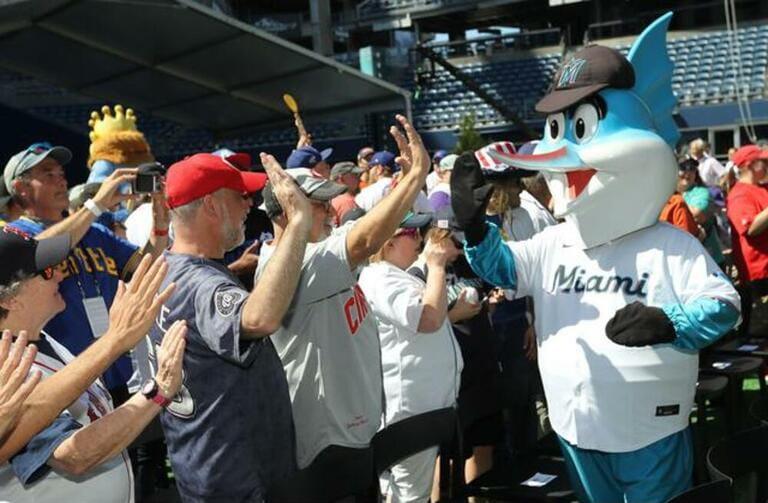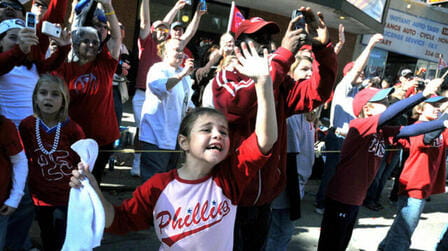The least valuable MLB team in 2023 is the Miami Marlins, with a value of $1.07 billion according to Sportico. This is a significant gap behind the most valuable MLB team, the New York Yankees, which is worth $7.13 billion.
Overview
There are a few key factors that contribute to the Miami Marlins having the lowest valuation among MLB teams:
- Recent on-field performance and lack of playoff appearances
- Small market size and limited fan base
- Struggles attracting and developing top talent
- Ownership changes and organizational instability
Despite these challenges, the Marlins have potential to increase their value in the future through developing young talent, improving fan experience, and building a winner on the field.
Miami Marlins Valuation Background
The Marlins have struggled to build value as a franchise since entering MLB as an expansion team in 1993. Here is some context on their valuation history:
- Founded in 1993 as an expansion team, so they have not had as much time to build up equity as other franchises.
- Moved to their current ballpark, LoanDepot Park, in 2012 after playing in two different stadiums in their first 19 seasons. The constant changes made it tough to establish a home identity.
- Have been sold multiple times, including most recently to a group led by Bruce Sherman in 2017. The ownership instability has not allowed for consistent strategic planning.
- Currently valued by Sportico at $1.07 billion, which ranks last among the 30 MLB teams. Their value has grown in recent years after being under $1 billion as recently as 2020.
Marlins Valuation Compared to Rest of MLB (via Sportico 2023 Estimates)
| Team | Estimated Value |
| - | - |
| New York Yankees | $7.13 billion |
| Los Angeles Dodgers | $4.83 billion |
| New York Mets | $3.02 billion |
| Boston Red Sox | $3.9 billion |
| Chicago Cubs | $3.86 billion |
| San Francisco Giants | $3.6 billion |
| Miami Marlins | $1.07 billion |
| Oakland Athletics | $1.39 billion |
| Tampa Bay Rays | $1.42 billion |
| Kansas City Royals | $1.17 billion |
On-Field Performance Lacking
The Marlins' on-field performance has lagged behind most MLB teams, which has hurt revenue and fan interest:
- No playoff berths since 2020 - Only 2 postseason appearances (2020, 2003) since founded in 1993
- 8 losing seasons in past 10 years - Have not finished over .500 since 2009
- No MVPs or Rookies of the Year since 2017 - Developing star players drives fan interest
- Young talent like Alcantara, Chisholm Jr., López provides hope
The Marlins must start winning more games to drive fan engagement, revenue, and long-term equity value. A rising tide lifts all boats.
Market Size Challenges
The Miami metro area ranks 46th nationally in population. While large overall, the region lacks as many dedicated professional sports fans as bigger markets.
- Transitory population - many residents have ties to other teams/cities
- Competition with beaches/attractions for entertainment time
- Hot climate makes indoor stadiums less appealing
This limits the Marlins' ability to build a large, devoted fan base and robust ticket sales and merchandise revenue.
Difficulties Attracting/Developing Stars
Without recent on-field success or a booming market, the Marlins have struggled to attract and retain star players. They have not had a top-tier homegrown star since Giancarlo Stanton traded away after the 2017 season.
Marlins Challenges Attracting/Developing Stars
- No MVPs since Stanton in 2017
- No Rookie of the Year since Chris Coghlan in 2011
- Consistently middle-of-pack payroll spending
- Best players like Yelich, Stanton, Realmuto eventually traded away
- Weak farm system lacking blue chip prospects
Building around young talent like Alcantara, Chisholm Jr. is essential to become a legitimate contender and desirable franchise.
Organizational Instability
The Marlins have had a tumultuous ownership history that has not allowed for sustained success.
- Original owner Wayne Huizenga sold the club to John Henry in 1998.
- Henry's group won the 2003 World Series but soon dismantled the roster and traded away the team's stars. This upset fans and sank the team's equity.
- Henry sold the team to Jeffrey Loria in 2002.
- Loria presided over the construction of Marlins Park in 2012 but continued the cycle of trading away homegrown stars for financial reasons.
- Current ownership group headed by Bruce Sherman purchased the team from Loria in 2017.
This revolving door of owners with short time horizons has prevented the club from executing a cohesive, patient team-building strategy.
How Can the Marlins Increase Their Value?
While the Miami Marlins are clearly the least valuable franchise in MLB currently, there are steps they can take to improve their situation:
- Win more games and make the playoffs
- Build up fan base and improve stadium attendance
- Invest in scouting/development to create homegrown stars
- Create strong organizational culture and identity
- Improve fan experience and affordability
On-Field Success and Playoff Runs
First and foremost, the Marlins need to win more games consistently. Given their young talent, they should aim make the playoffs within 3 years. Postseason runs generate fan excitement and revenue.
Playoff appearances also make the franchise more attractive for free agents to join. Success begets success.
With good health and development from Alcantara, Chisholm Jr., López and others, the Marlins have the early makings of a contender.
Grow Fan Base and Attendance
The Marlins currently rank 29th in MLB in average attendance at just over 10,000 fans per game. They need to grow this to over 20,000 per game to maximize revenue.
They need more group ticket sales, family packages, and promotions to get more locals invested in Marlins baseball. Building a passionate fan base is integral to increasing equity.
Community engagement through charity events and youth baseball clinics can also help cultivate new generations of Marlins fans.
Scout and Develop Talent
The Marlins have failed to develop any top-tier homegrown stars since Giancarlo Stanton. They need to refocus on scouting and player development to create the next face of the franchise.
Investing in Latin American scouting and academies can help unlock access to talent pools. Finding the next Miguel Cabrera or Juan Soto could rapidly accelerate the Marlins' rebuild.
Promoting from within also allows the team to manage payroll and retain players long-term. Homegrown stars build loyalty.
Build Organizational Culture and Identity
After years of ownership instability, the Marlins need to focus on creating a unifying culture and identity. This starts with strong executive leadership.
They should emphasize a fun, fan-friendly style of play on the field that fits Miami's vibe. Off the field they need transparent communication and consistency.
Building trust and goodwill with fans and South Florida community leaders can help transform public perception of the Marlins.
Improve Fan Experience
The Marlins need to make attending games a memorable and affordable experience for families and groups. Leaning into Miami's culture can help create a unique environment.
Offering great food at family-friendly prices is important, as are diverse entertainment acts and promotions. Creating a vibrant ballpark atmosphere can enhance equity value.
Investing in player access events and kids activities can also help build the next generation of Marlins fans.
Conclusion
In summary, while the Miami Marlins are currently the least valuable MLB franchise, they have avenues to growth. By winning on the field, investing in talent, growing their fan base, establishing consistency, and providing a great ballpark experience, the Marlins can substantively increase their equity value.
It will require patience and commitment from ownership, front office, players, and fans. But with good leadership and strategic planning, the Marlins have the market size and potential to become one of the more valuable small-market teams. Executing on their vision will be key.












